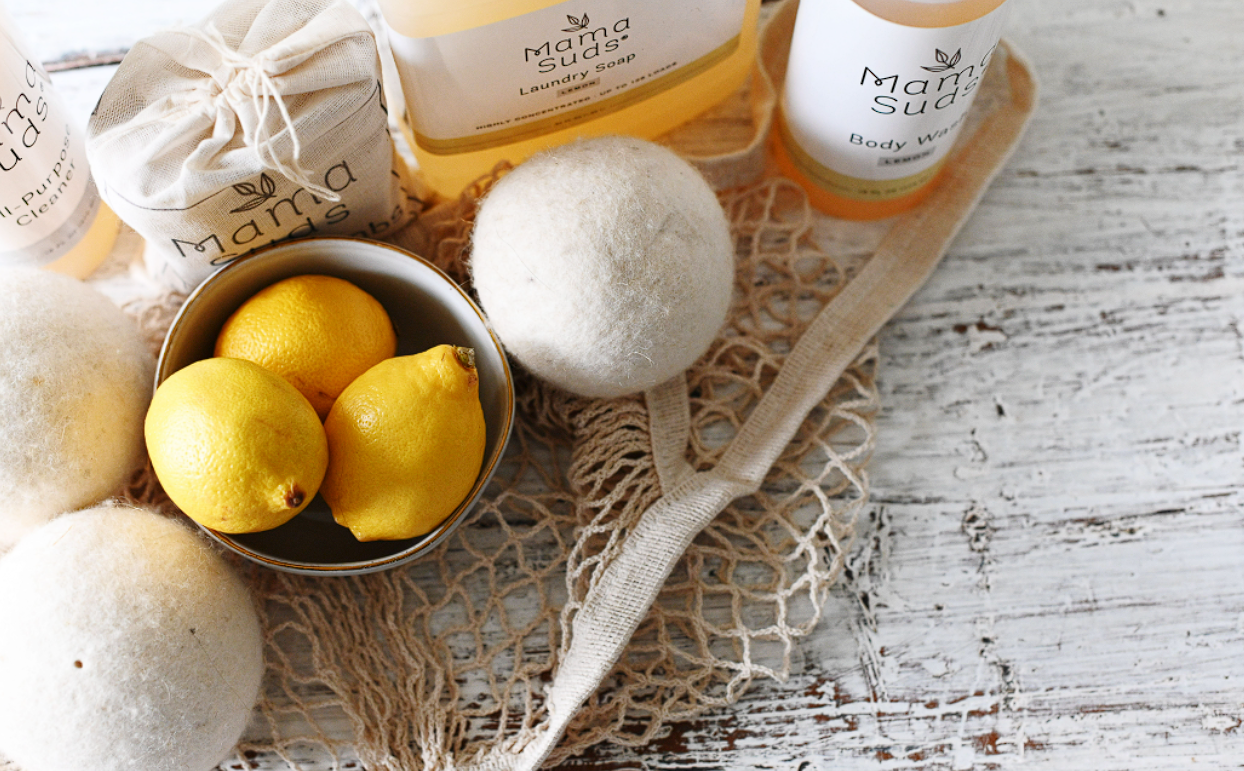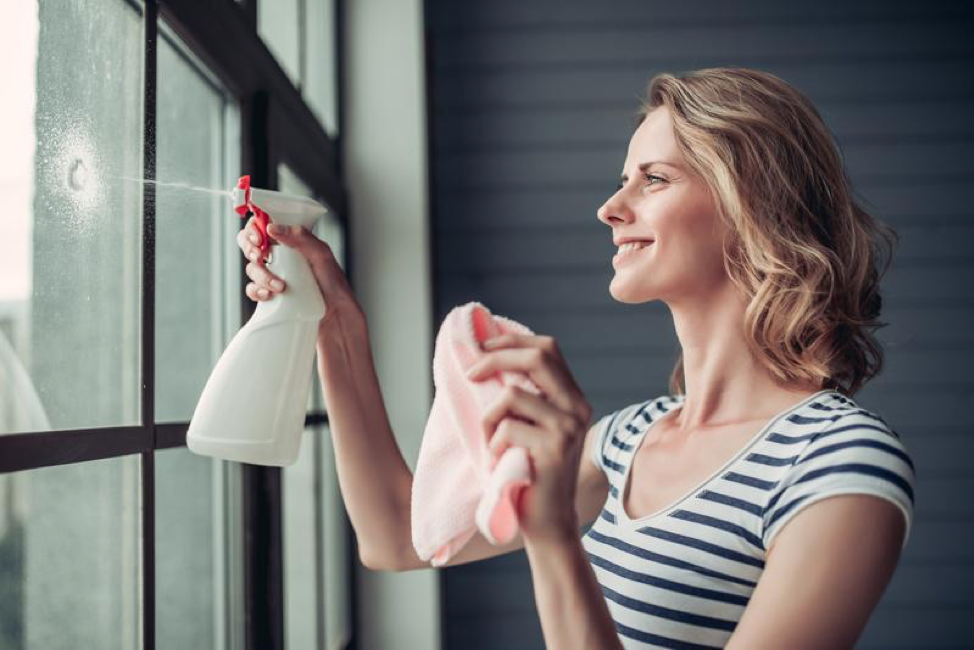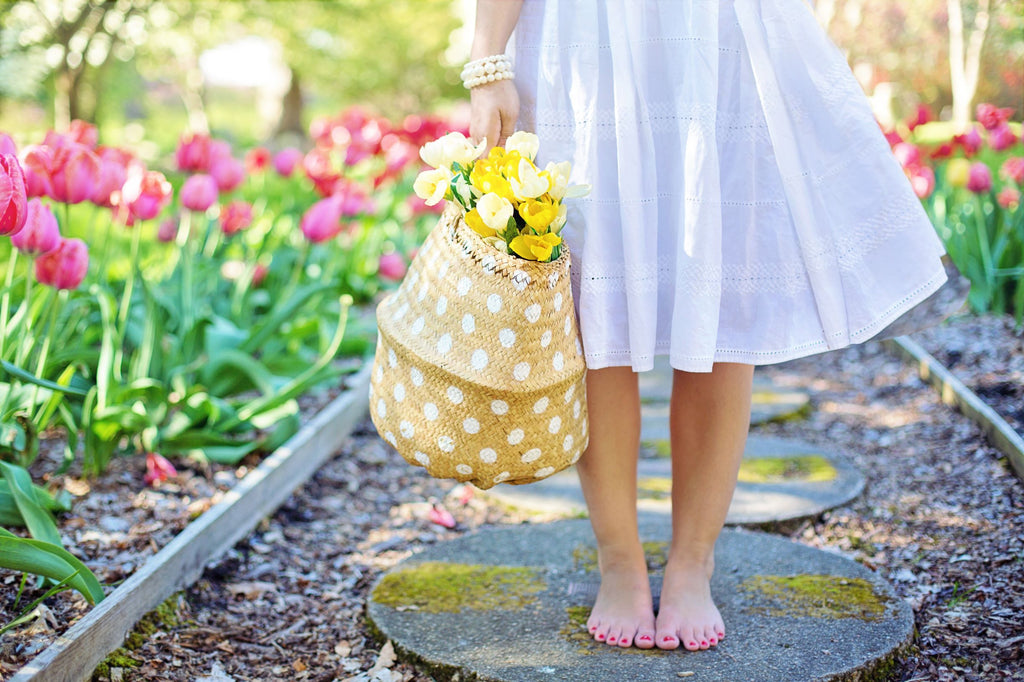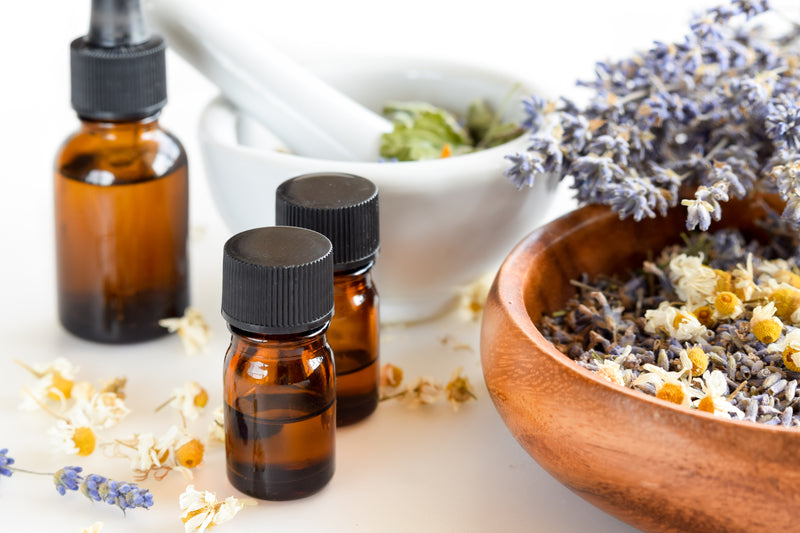
The CleanSuds Blog
Where education and truthful facts are easy to come by.

5 Organizing Techniques to Get on Top of Your Home’s Clutter
• Set up three boxes for items to keep, donate, and throw away.
• Install shelves and storage containers for organizing.
• Label everything to make it easy to remember where items belong.
• Make a daily routine of putting everything back in its place.
• Have everyone living in the home on board with the plan together.

Running an Eco-Friendly Household Is Not as Hard as It Seems
There's a guy on social media who takes plastics out of the ocean and makes them into useful things to sell for operating money. Many people read this and decide they'll go green. Need to know how to begin? You can start in your own home.
In the Beginning
Having an eco-friendly household isn't as hard as it seems. Take cloth shopping bags to the grocery. Take a Mason jar when you want a soft drink or a ceramic mug or thermos for coffee. If you do, you won't be using foam cups and plastic lids. Use glass storage bowls in place of plastics and Tupperware.
Beyond these simple changes, you can also take steps to invest in eco-friendly technology and renewable energy. Switching to solar power reduces greenhouse gases, which will also minimize your home's carbon footprint. If possible, see what your options are for installing residential solar panels and using other energy efficient methods of powering your home. You can also look for ways to minimize water usage in your home. One option is to install energy-efficient plumbing on your property. Even switching to a submersible pump can help reduce energy usage in your home.
Reduce Plastic Use
You can make an effort to reduce plastic waste in your home by recycling and using other materials. Instead of plastic, try using glass. We know it's difficult to find glass bottles, but they're out there. Use your own glass containers to buy from the bulk section at the grocery. Bypass bottled water and instead use your own in a glass container.
If there simply is no way to use glass, then reuse your plastic. Use your plastic containers for organizing the paper clips and rubber bands on your desk or your hairpins and ponytail holders on your vanity table. You can also use plastic containers to hold change or organize the nails, screws and bolts in the tool chest. There are so many reusable plastic items that can be recycled and end up in landfills instead. If you cannot find the time to recycle these items yourself, see if you have friends or a local volunteer group that can help out with this.
Eco-Friendly Cleaning Products
As you make an effort to reduce and recycle plastics in your home, you can go green by using natural cleaning products. White vinegar makes a good fabric softener, and it can be used for cleaning the kitchen counters and the toilet. Baking soda cleans teeth, the toilet and sink drains, and it freshens carpets. Lemon mixed with baking soda cleans the garbage disposal as well as windows.
Decluttering Your Home
Decluttering your home is the first step to creating an eco-friendly home. It allows you to sort through your things and get rid of what you never use. You can either donate what you don't use to a goodwill store or if you want to keep it for future use you can put it in storage. Either way, removing the clutter from your home will streamline your organization efforts and it will prevent you from buying things you don't need. Instead of buying new furniture, repurpose what you have and recycle whatever you can. It will not only move you along the eco-friendly path but it will save you money in the long run.
Other Green Habits
Other means of going green include incorporating these habits:
- Using LED light bulbs, which last up to 13 years
- Doing the wash in cold water
- Drying clothes on a clothesline, which helps garments last longer and smell great
- Compost leftovers past their use-by date for garden fertilizer
- Walk or bike instead of driving
Living an eco-friendly life isn't hard to do. Once you begin, you'll wonder how you ever lived any other way. You'll have lots of fun finding ways to lower your carbon footprint and save the Earth.

How to Make Minimalism Part of Your Lifestyle

In today's consumer-oriented world, it can be easy to forget the adage that “less is more.” But the truth is that you might be happier with having (and wanting) fewer material goods. Whether you don't have a lot of money to spend or you want to feel free from material constraints, here are some ways to incorporate the philosophy of minimalism into your lifestyle.
Don't Buy Excess Goods
Going through the process of decluttering your home can be hard work. But the last thing you want to do is get rid of all your excess goods only to add more! Once you get rid of extra material goods, make a habit of buying fewer unnecessary goods and products. Trust us, your life and lifestyle will be the better for it.
Now is an excellent time to ask yourself whether you “want” or “need” certain things. If you just moved from California to Maine, for instance, it makes sense to buy winter clothing. But if you're buying another scarf just to keep up with the latest trends, you might want to remember your priorities.
Get Rid of Superfluous Items

Credit: https://www.movingcompanyreviews.com/
If you're looking to adopt a minimalist lifestyle, one great way to start is by getting rid of excess material “things” that you don't need. Remember your shoe craze in college or the time your daughter collected all those Barbie dolls? The odds are good that these items are now collecting dust somewhere in your home.
Ideally, you should go through every room in your house (including every closet and drawer) and get rid of things you don't need. Getting rid of clutter from your storage unit, which is probably one of the last places you ever want to check, can be especially rewarding.
Reuse, Reduce, and Recycle
Recycling has grown in popularity in recent years. These days, many consumer products, from tires to blue jeans, come from recycled goods! While you might not work at the recycling plant, you can still do your part by recycling items that are permissible where you live. Recycling is also a great way to clean up the environment, save energy, and conserve materials for future use.
Eat Home-Grown Food

Credit: Legion Landscaping
It may be tempting to eat out at restaurants, but one aspect of adopting a minimalist lifestyle is eating more foods at home. Besides adjusting your lifestyle, there are many other advantages to growing fruits and vegetables.
For starters, it's a cheaper and more nutritious alternative to buying products at the store that have been shipped from far away. It’s also more environmentally-friendly to do your part. Caring for our planet is part of what we’re all about here at Mama Suds. We know that gardening–and especially getting your kids involved in it–fosters a greater sense of appreciation for your food and where it comes from.
Stress from your material goods can become overwhelming. If you're moving and need to downsize, or if you just can't afford to adopt the latest trends, you can always benefit by adopting minimalist living techniques. Luckily, it's quite easy to live by the philosophy that “less is more.” With a change in mindset and a reduced desire for material goods, you can quickly start living a more relaxing and fulfilling life.

Can Toxins in Your Environment Cause Chronic Illness?
• Exposure to environmental toxins can occur through skin contact, inhalation, ingestion, or injection.
• Short-term exposure to environmental toxins may cause symptoms such as throat or nose irritation, skin irritation, loss of consciousness, eye damage, nausea and vomiting, coughing or sneezing, headaches and more.
• Long-term exposure can cause permanent physical effects and chronic diseases including obesity and hormone-dependent cancers.
• One way to reduce toxin exposure is to use green cleaning products; replace candles with essential oils; purify water for cooking and drinking; avoid Teflon cookware; leave shoes outside; reduce single-use plastics; use a dehumidifier; and invest in an air purifier.
• To reduce toxin exposure in food it is important to avoid refined seed/vegetable oils; foods in plastic containers; trans fats; red meat; added sugar; high mercury fish; use organic produce/herbs when possible/cook at home whenever possible.
• A detox diet - usually involving a short juice fast - can

Don’t Forget to Clean These 3 Areas After You Move In
According to On The Move, "Becoming a homeowner can be one of the most exciting milestones you can achieve in your life. Although you should be proud of what you've accomplished, caution should also be heeded before you move into the home." Below are four things you should check before you move, as noted by professional home cleaners.
Don’t Forget About the Nails
The family who lived in your home before you likely felt the desire to decorate the walls with pictures, certificates, and other sentimental items. These items had to be secured to the wall by hanging on a nail. When you move in, those nails may still be in the walls. So few people think to remove them. When professional cleaners are hired to clean a home, they are not obligated to remove leftover nails from the walls. Before you move into your new house, it would be a good idea to do a cursory inspection of the rooms to remove any remaining nails and fill the holes with spackling.
Furniture Hides Dust
One of the most neglected areas of a home are the corners. Furniture that never moves from corners allows dust and dirt to accumulate in the carpet and on the baseboards. This dust can become difficult to clean after years of accumulation, so before you move into your new home, do a thorough cleaning of all corners and baseboards with warm soapy water and a microfiber cloth. While you're going through and dusting all the baseboards, you should take the opportunity to also inspect the outlets for underlying electrical issues. That way, if there are any issues, you can solve them before any more dangerous problems can arise.
Under Refrigerators Is No Man's Land
Refrigerators are heavy and are rarely moved unless something falls behind it or the person is moving out. Layers of grime, crumbs, and old food can collect under a fridge, and when a person moves out, they rarely clean that area. Going into a home you've recently purchased with some cleaning supplies to tackle cleaning the floor where your refrigerator will sit is always a good idea.
You Don’t Have to Do Everything
It can be incredibly overwhelming to try and do everything by yourself when you are moving. You may think that you have to get everything packed and cleaned on your own, but you don’t! Even if you aren’t using their services to move, you can hire a moving company to help you pack everything up. Packing and moving can be stressful work, and a good moving company can help you take that burden off your shoulders.
When it comes to preparing for your move, there are a lot of things to do, but packing and cleaning are probably the ones that are at the forefront of your mind. Don’t hesitate to ask for help if you are getting overwhelmed.
Start off life in your new home on the right foot — get all the healthy, chemical-free cleaning supplies you’ll need in our shop!
4 Tips to Living a Lean, Clean, Green Life
• Make small lifestyle changes such as cutting a couple minutes out of your daily shower or wearing a sweater instead of turning on the heater to save both water and energy.
• Be energy efficient by installing renewable energy sources such as solar panels which can help reduce your dependency on coal or other fossil fuels, leading to significant savings over time.
• Buy less items that you don't need in order to reduce the demand for new products and save resources from having to manufacture new items.
• Use green cleaning products to take care of messes and protect your health, the people living in your home, and the environment.
• Transiting towards a simple, green lifestyle can lead to improved mental health and cost savings over time.

5 Quick Fixes to Eliminate Toxins From Your Diet
• Prepare meals at home using whole ingredients to avoid high doses of sodium, sugars, and preservatives.
• Consider cookware made of cast iron, stainless steel, glass, ceramic, or stoneware in order to avoid toxins used in non-stick surfaces such as Teflon.
• Thoroughly wash fruits and vegetables to remove chemicals used for insect protection and shelf life prolongation.
• Be cautious of seafood when selecting proteins, as mercury accumulation from certain fish can cause brain damage, lung dysfunction etc.

4 Best Essential Oils You Have Probably Never Heard Of
• Spikenard Essential Oil: derived from Nardostachys Jatamansi, purifying benefits to skin
• Galabanum Essential Oil: derived from Ferula galbaniflua, used for air passages and skin issues
• Baobab Oil: derived from the Baobab Tree found in Africa, high amounts of Vitamin C, A & B and fatty acids with antioxidant properties

By Making These 5 Simple Changes, You Can Live More Sustainably
There are a lot of ways to get a more sustainable lifestyle, from choosing sustainable groceries to reducing your water consumption. All of them can help to protect the environment for future generations, and most of them are relatively simple for the average person.
Shop Smart
Our shopping habits determine the demand for each product on the market, so choosing sustainable businesses can encourage stores to carry green products and manufacturers to choose sustainable processes.
There are a few rules of thumb that can guide you towards a green shopping basket. In general, you should favor local foods that are in season to reduce the impact of shipping and storing produce. It is also best to prefer plant-based products over meat and other animal products due to the environmental impact of livestock.
When shopping for a certain item, research the materials and processes that go into creating it. For example, when shopping for jewelry, it's important to understand where the gemstones came from. Pearls tend to be the most eco-friendly option when selecting a gem, but only when ecologically healthy farming practices are followed. By understanding differences in sustainability and processing practices, you can make an informed decision, shop smarter, and live more sustainably.
You don't need to be entirely green to have a positive impact, so make the changes that come most readily to you to make sure you stick to the green shopping plan.
Avoid Waste
Humans waste a tremendous amount of food. Try to buy only what you need, so that as little goes to waste as possible. The same rule can also apply to other items, such as phones. Just buy the ones that you intend to use for a long time, and ask yourself if you really need an upgrade instead of automatically buying the newest model when it comes out. Be especially careful with waste disposal so as not to cross contaminate and keep your home safe and clean.
Share with Friends
Sharing is caring, both for other people and for the environment. Sharing an item with a friend means that they don't have to buy one of their own, which saves resources. It is especially useful to share vehicles and rides since that cuts down on the amount of fuel that you need to use to go about your life.
Use Muscle Power
You can also save fuel by getting some exercise. Walking and biking instead of driving will keep you fit while also reducing greenhouse gas emissions. The same applies to using an old-fashioned lawn mower instead of a riding model or opting for some elbow grease instead of any other motorized items.
Conserve Water
Wasted water is just as bad as wasted energy. Fortunately, you can conserve water in a lot of little ways. Try to take shorter showers, or install efficient appliances. You can also collect cold water from your shower while you wait for it to heat up, and use it to water your plants.
These may seem like minor changes, but they do add up. It is easier and often more effective to make a bunch of little changes than to try a single big one. Just pick a couple of methods that appeal to you, give them a try, and see how easy it is to live a sustainable life. For more clean and sustainable living tips, check out our blog!
References:


